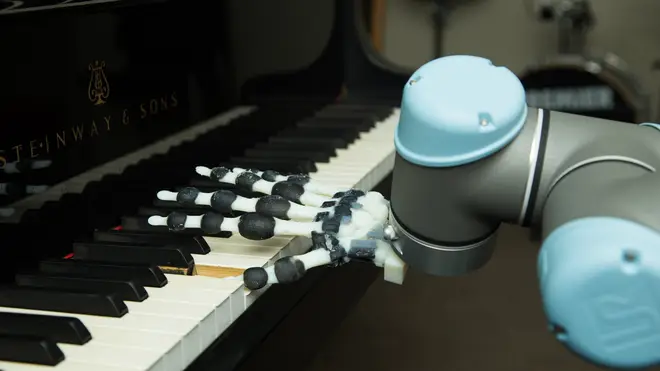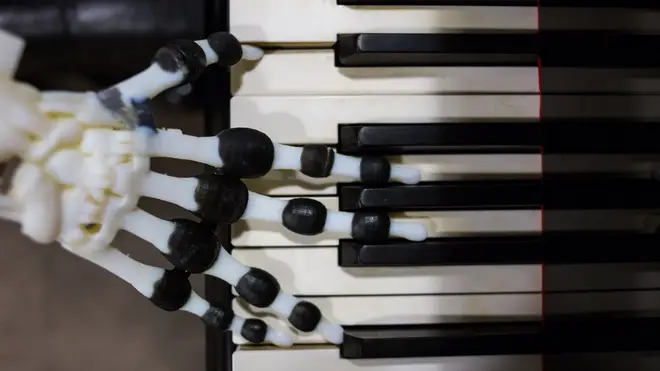On Air Now
Relaxing Evenings with Zeb Soanes 7pm - 10pm
21 December 2018, 13:56
It can also play some staccato Scarlatti passages. This is the stuff of the future.
Scientists have developed a new robotic hand which can play the piano with a curiously human touch.
The study, published on Wednesday in Science Robotics, explains that the new hand operates passively, differing from previous ‘piano bots’ which have relied on a maze of motors. A mechanical arm controls just the wrist, and the fingers move in a similar way to a human hand.
“Our aim is to move away from the traditional approach in robotics, where one motor gives one behaviour, because that doesn’t scale,” said Josie Hughes, a researcher in the Department of Engineering at the University of Cambridge who led the study.
She told the New York Times: “We wanted to replicate how the human hand is strong and powerful, but also capable of performing light and delicate movements.”
We might not be seeing the hand mastering a Liszt étude anytime soon, but its rendition of ‘Jingle Bells’ is surprisingly dexterous.
The hand, which follows a design inspired by human anatomy, is part of a larger effort to design soft robots that move in a similar way to bodies.
Developments in this area could lead to robots that can explore natural environments, or even perform medical diagnoses by touch.
The hand was created with a 3-D printer, which blended different ratios of hard plastic and soft rubber to create ligaments and joints with varying degrees of stiffness. The hand was then attached to a robotic arm, which is commonly used in industrial processes.
Hughes' team of researchers broke piano playing down into three types of movement: single finger strikes, jumps and sliding thumb movements. Then, they tested the hand’s movements using three musical excerpts.

The first, from Scarlatti’s ‘Toccata’, required the hand to play staccato notes with its index finger. Keeping the robot’s forefinger stiff, engineers found this movement came closest to replicating how a human would play the notes.
Next, they used ‘Alligator Crawl’ by American jazz pianist Fats Waller to test the robot’s ability to play octave jumps. They found this movement required stretchy ligaments in the spaces between fingers, but stiff joints in the fingers to ensure accuracy.
Finally, the team used George Gershwin’s ‘Rhapsody in Blue’ to test the flexibility of the thumb. They discovered that low stiffness in the thumb joints allows the index finger to cross over the thumb while playing. It also helped them understand how a pianist’s thumb moves across the keys to create glissandi.

Ms Hughes said that compared with previous piano bots, this hand was much more able to control volume, thumb movements and staccato and legato playing. She is now planning to expand its range of movements by using sensors, motors and components that act like tendons.
“We’re going beyond simply treating notes as a list of instructions,” she said. “Piano playing is an art. We’re trying to introduce that complexity, depth and artistry into our robot’s behaviour.”